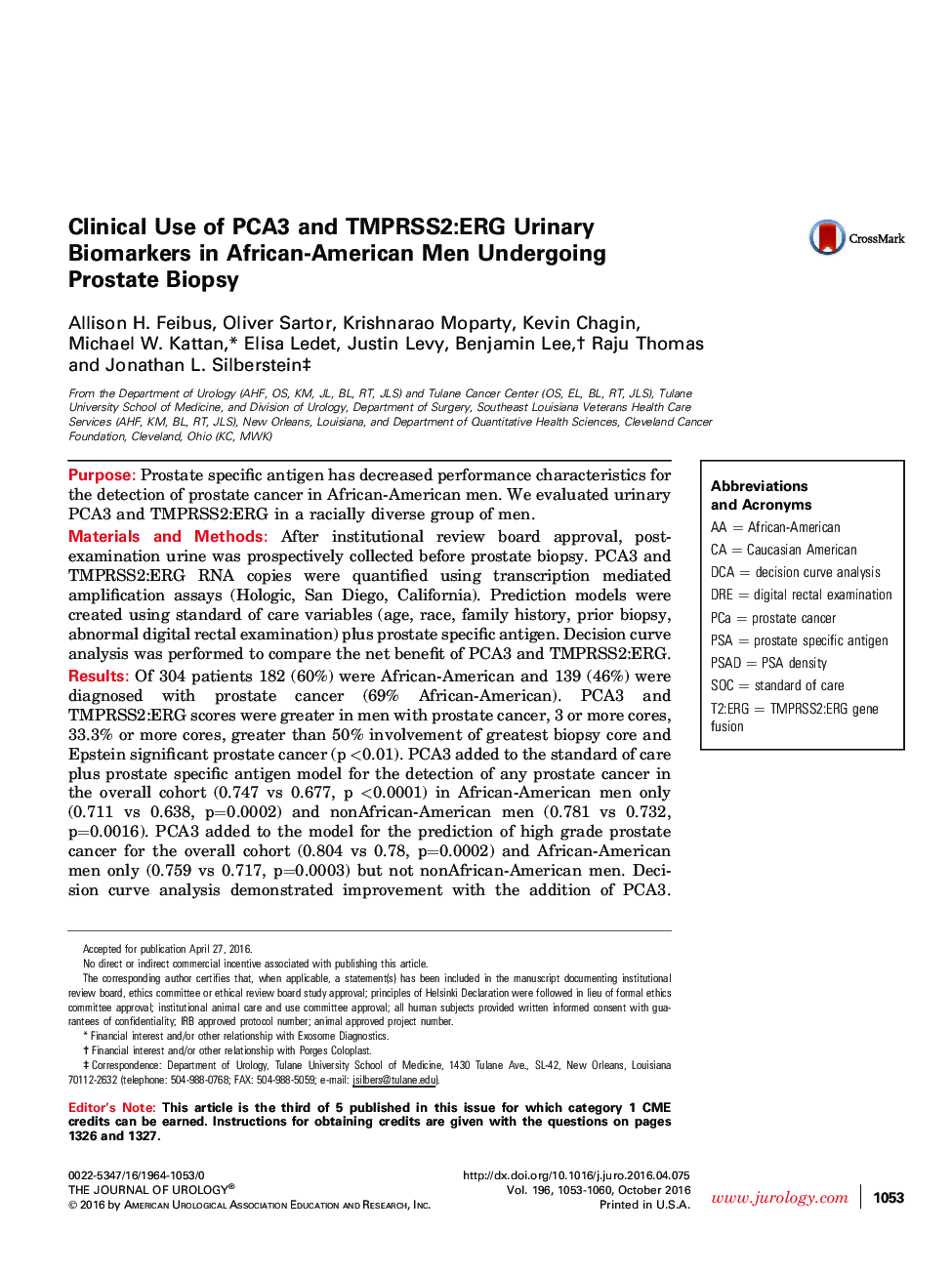| Article ID | Journal | Published Year | Pages | File Type |
|---|---|---|---|---|
| 3857718 | The Journal of Urology | 2016 | 8 Pages |
PurposeProstate specific antigen has decreased performance characteristics for the detection of prostate cancer in African-American men. We evaluated urinary PCA3 and TMPRSS2:ERG in a racially diverse group of men.Materials and MethodsAfter institutional review board approval, post-examination urine was prospectively collected before prostate biopsy. PCA3 and TMPRSS2:ERG RNA copies were quantified using transcription mediated amplification assays (Hologic, San Diego, California). Prediction models were created using standard of care variables (age, race, family history, prior biopsy, abnormal digital rectal examination) plus prostate specific antigen. Decision curve analysis was performed to compare the net benefit of PCA3 and TMPRSS2:ERG.ResultsOf 304 patients 182 (60%) were African-American and 139 (46%) were diagnosed with prostate cancer (69% African-American). PCA3 and TMPRSS2:ERG scores were greater in men with prostate cancer, 3 or more cores, 33.3% or more cores, greater than 50% involvement of greatest biopsy core and Epstein significant prostate cancer (p <0.01). PCA3 added to the standard of care plus prostate specific antigen model for the detection of any prostate cancer in the overall cohort (0.747 vs 0.677, p <0.0001) in African-American men only (0.711 vs 0.638, p=0.0002) and nonAfrican-American men (0.781 vs 0.732, p=0.0016). PCA3 added to the model for the prediction of high grade prostate cancer for the overall cohort (0.804 vs 0.78, p=0.0002) and African-American men only (0.759 vs 0.717, p=0.0003) but not nonAfrican-American men. Decision curve analysis demonstrated improvement with the addition of PCA3. For African-American men TMPRSS2:ERG did not improve concordance statistics for the detection of prostate cancer.ConclusionsFor African-American men urinary PCA3 improves the ability to predict the presence of any and high grade prostate cancer. However, the TMPRSS2:ERG urinary assay does not add significantly to standard tools.
